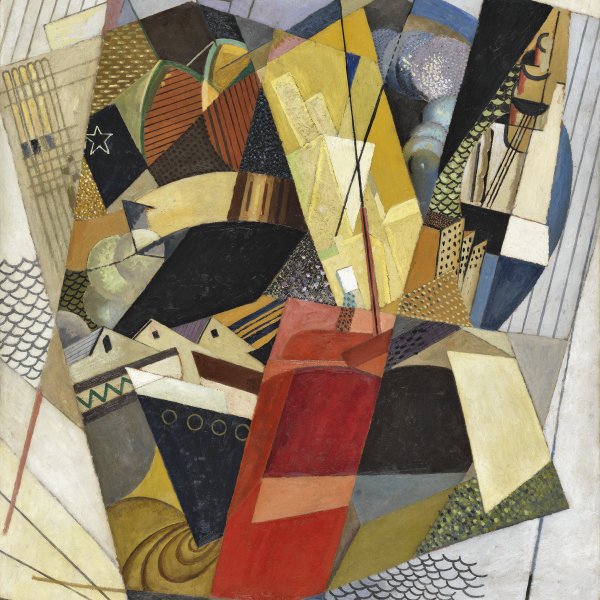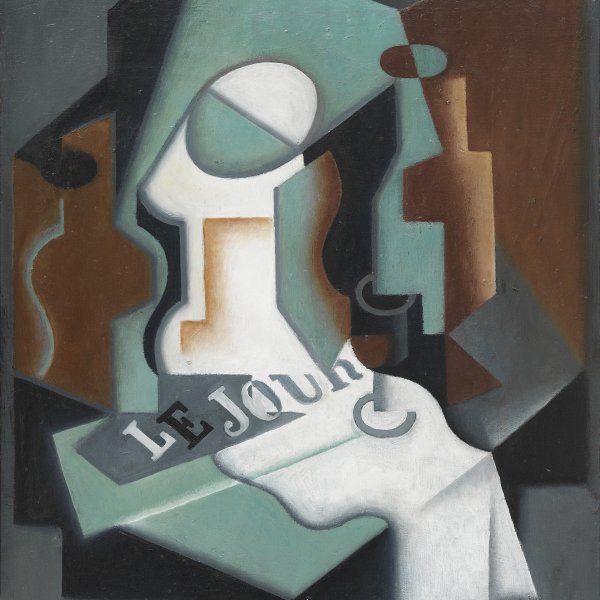Head
August Herbin, for a time a neighbour of Pablo Picasso and Juan Gris at the Bateau-Lavoir in Montmartre, was among the artists who were closely connected to Cubism from its emergence. He showed his works at the 1912 Salon de la Section d’Or together with Jacques Villon, Metzinger, Gleizes and Léger, and even worked in Céret in 1913, as Picasso and Gris had done. Herbin was not called up when the Great War erupted. He continued to work in Paris during the war years and in 1918 Léonce Rosenberg exhibited his works at the Galerie l’Effort Moderne in order to prove that Cubism remained alive following the Armistice. Thenceforward Herbin belonged to the set of artists grouped around Léonce Rosenberg, who became the Cubists’ dealer after Kahnweiler’s possessions were confiscated, his gallery on the rue Vignon was closed and he was forced into exile on account of his German citizenship.
The present Head in the Museo Thyssen-Bornemisza collection is dated January 1918, by which time Herbin’s Cubism had evolved towards highly geometrical compositions built from chiefly vertical planes. As in his still lifes from this period, the composition recalls the simplified figurative schemes Picasso worked on in Céret in 1913, while the brilliant colours are close to the palette employed by Gris early in 1918. The combination of various planar forms that are superimposed allows a double reading of the painting, which may be seen as a head with only one eye or as a still life.
Paloma Alarcó









